Overview
This article delves into the intricate character of Dr. Shaun Murphy in 'The Good Doctor,' inviting readers to consider the real-life implications of autism representation. It emphasizes the crucial need for authentic portrayals of autism in the media. By discussing how the show effectively challenges stereotypes, it fosters empathy and encourages meaningful conversations about neurodiversity. Ultimately, the article aims to enhance public understanding and acceptance of individuals on the spectrum, highlighting the importance of these discussions in our society.
Introduction
In a world where representation matters more than ever, "The Good Doctor" emerges as a vital cultural touchstone in the portrayal of autism. Through the character of Dr. Shaun Murphy, the series illuminates the complexities of autism and savant syndrome, while also challenging the long-standing stereotypes that often accompany these conditions.
As viewers accompany Shaun on his journey within a high-pressure hospital environment, they are invited to explore the duality of struggle and strength that characterizes many individuals on the autism spectrum. This heartfelt portrayal has ignited widespread conversations about empathy, understanding, and the diverse experiences of those with autism, establishing it as a crucial piece of media in nurturing a more informed and compassionate society.
As discussions about representation and authenticity in media continue, "The Good Doctor" plays a pivotal role in shaping perceptions and advocating for a more nuanced understanding of autism.
About ASD Media: Empowering Parents and Professionals in Autism Awareness
At ASD Media, we are deeply committed to enhancing the implementation of ABA therapy. We understand the challenges parents and professionals face, and we strive to provide valuable insights and strategies to improve outcomes. Our mission is to cultivate a supportive and inclusive community where individuals can share their experiences, learn from one another, and receive the assistance they need on their journey.
By subscribing to our newsletter, you can stay updated on the latest news and gain unlimited digital access to a wealth of resources designed specifically for you. We believe in empowering parents and professionals to unlock the potential of children with developmental disorders and ADHD. Our effective strategies focus on managing challenging behaviors, navigating support services, and enhancing social skills development.
Join us in creating a nurturing environment where everyone can thrive. Together, we can make a difference in the lives of children and their families.
Dr. Shaun Murphy: A Complex Representation of Autism in 'The Good Doctor'
Dr. Shaun Murphy, portrayed by Freddie Highmore, is a surgical resident who beautifully illustrates the complexities of neurodevelopmental differences and savant syndrome, leading many to wonder, does Shaun Murphy have autism in real life? His character navigates the demanding environment of a hospital, showcasing both the hurdles faced by individuals on the spectrum and their remarkable abilities. This duality not only emphasizes the challenges associated with the condition but also highlights the unique strengths that many individuals possess, making Shaun a relatable and inspiring figure for audiences.
The representation of this condition in media, particularly through characters like Shaun, has garnered significant attention. Recent statistics reveal that only about 1% of television characters are depicted as having the condition, underscoring the importance of accurate and thoughtful portrayals. As we approach 2025, discussions surrounding Shaun's role have intensified, especially following events that raised questions about representation and sensitivity in media, such as the misgendering incident in 'The Good Doctor' that sparked widespread conversation on social platforms. Advocates for individuals with autism have noted that while Shaun's portrayal showcases extraordinary abilities, it also prompts the question of whether does Shaun Murphy have autism in real life, reflecting the real-life experiences of those on the spectrum in high-pressure professions. This representation can be a powerful catalyst for raising awareness and fostering understanding, as it encourages audiences to consider the diverse experiences of individuals on the spectrum. Additionally, the show's popularity on TikTok highlights its influence on media trends and dialogues regarding the representation of individuals with developmental differences. However, some experts caution that the show tends to depict these conditions as a form of 'superpower,' primarily through white, male genius characters like Shaun. As discussions about neurodiversity representation continue to evolve, characters like Dr. Shaun Murphy play a crucial role in shaping perceptions and supporting advocacy efforts. For parents and advocates, engaging with these portrayals and advocating for more nuanced representations in media can help nurture a more inclusive understanding of the condition.

Cultural Impact: How 'The Good Doctor' Influences Public Understanding of Autism
The Good Doctor' has profoundly shaped public understanding of developmental disorders by bringing this important topic into mainstream conversation. The portrayal of Dr. Murphy has sparked meaningful discussions about whether Shaun Murphy has autism in real life, which challenges long-held stereotypes and nurtures empathy. As viewers connect with the story, they are encouraged to reconsider their previous assumptions about developmental disorders. This shift in perspective fosters a more informed and compassionate community, prompting us all to engage with and support one another.
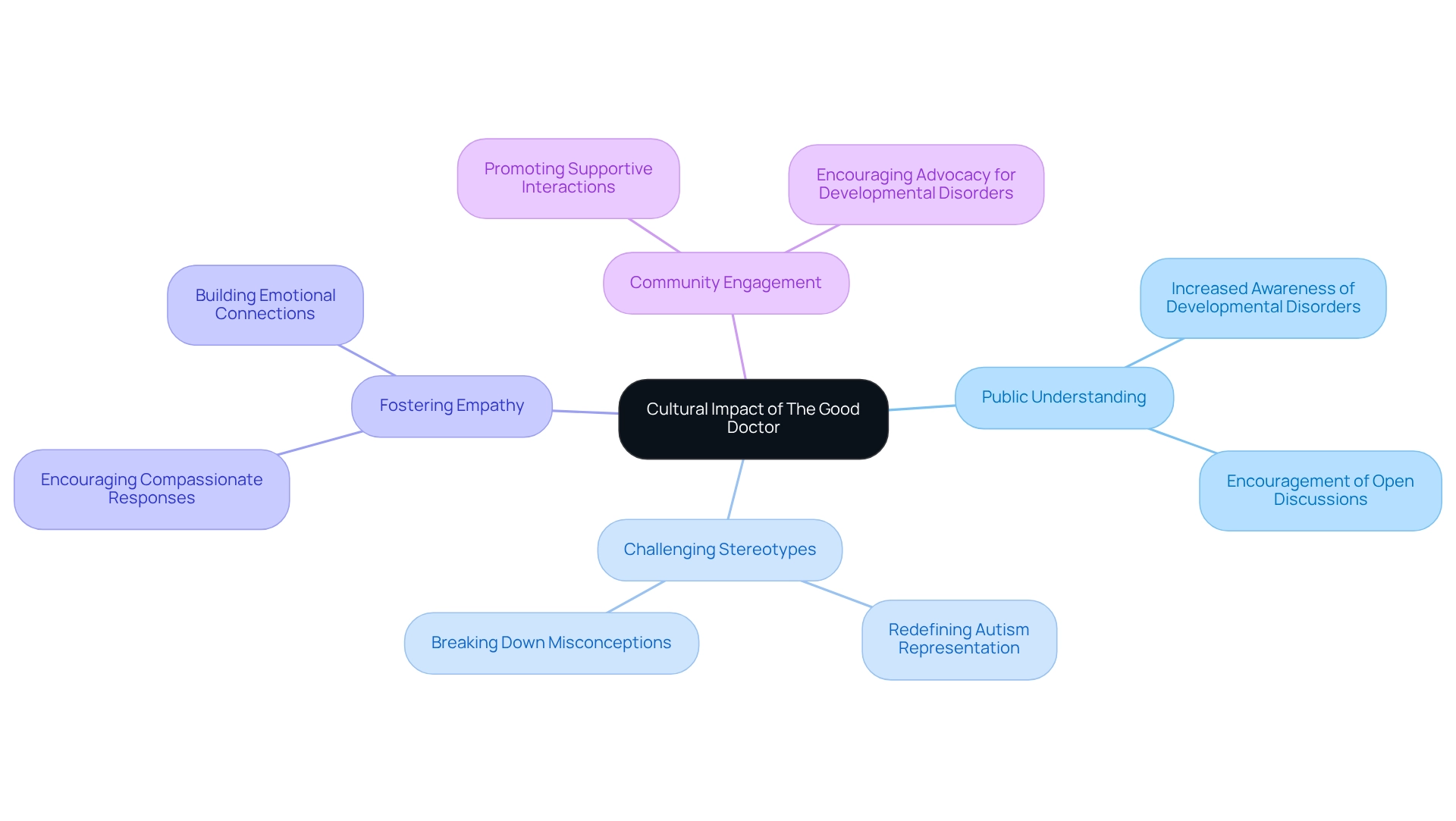
Debunking Myths: 'The Good Doctor' Challenges Common Misconceptions About Autism
The Good Doctor' plays an essential role in addressing common misconceptions about neurodiversity, particularly the notion that individuals on the spectrum lack empathy or social skills. Dr. Murphy's character beautifully illustrates how autistic individuals can possess deep emotional intelligence and build meaningful interpersonal relationships. This thoughtful portrayal not only challenges harmful stereotypes but also nurtures a more accurate and compassionate understanding of autism.
Recent discussions among advocates for those with developmental disorders highlight the importance of such representations in media, emphasizing their potential to significantly influence public perception and awareness. As advocate Sean aptly states, "Correct representations in media are essential for promoting understanding and acceptance within society."
By revealing the complexities of autism, 'The Good Doctor' contributes to a broader conversation aimed at debunking myths and fostering inclusivity, aligning with ASD Media's mission to empower parents and professionals in this vital field.
Authentic Representation: The Importance of Accurate Autism Portrayal in Media
A genuine portrayal of neurodiversity in media is essential for fostering understanding and acceptance. 'The Good Doctor' aims to present a realistic depiction of Dr. Shaun Murphy's journey, exploring the question of whether Shaun Murphy has autism in real life, while showcasing both his challenges and triumphs.
By delving into the complexities of neurodiversity, the show inspires viewers to appreciate the diversity within the spectrum and recognize that each individual's experience is unique. This understanding encourages a deeper compassion for those navigating similar paths, inviting us all to reflect on how we can support one another in our journeys.
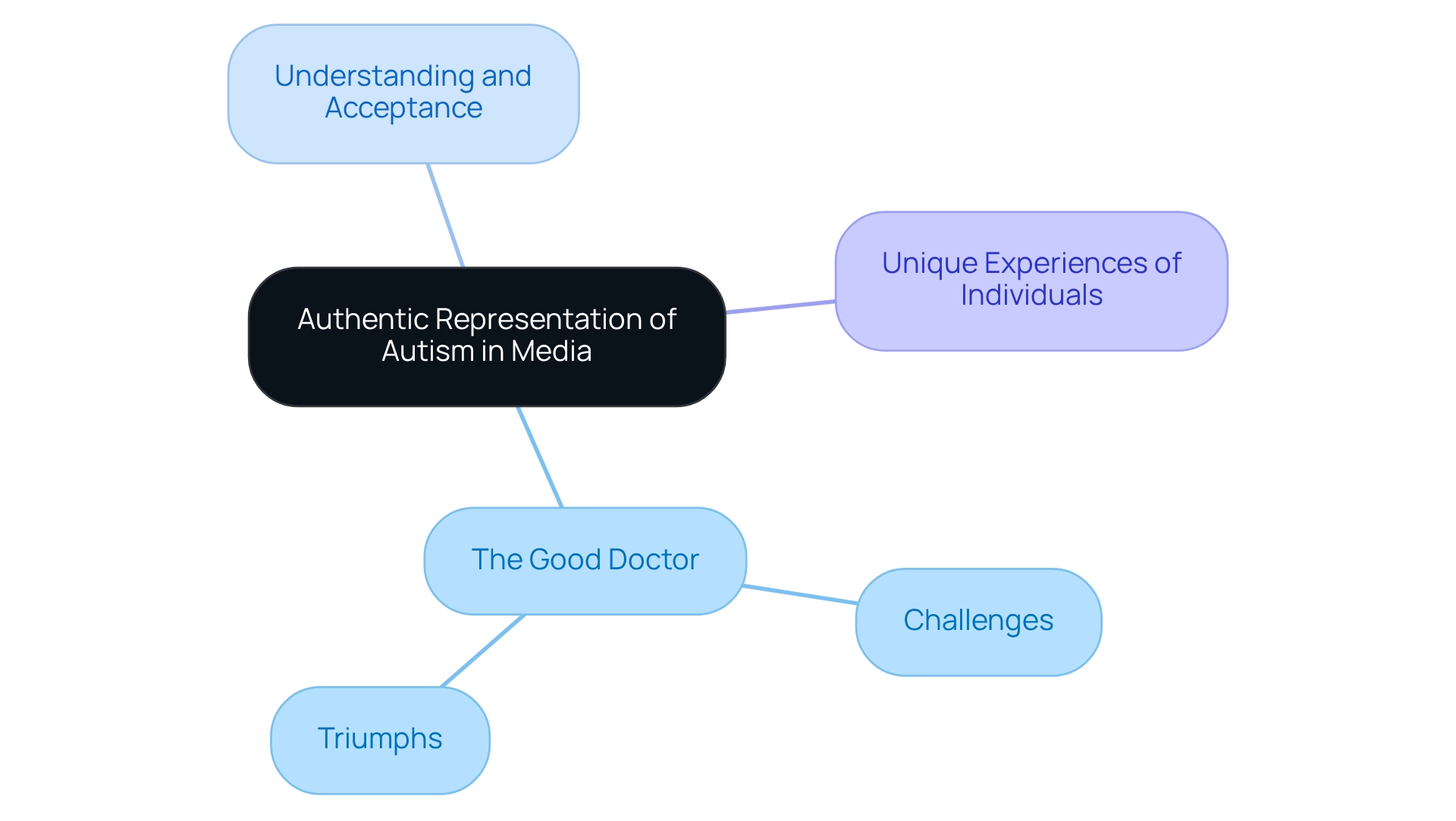
Educational Insights: Lessons for Parents and Professionals from 'The Good Doctor'
The Good Doctor' serves as a beacon of educational insights for parents and professionals engaged with individuals on the spectrum. It highlights the vital importance of patience, understanding, and effective communication. Recent statistics reveal that implementing effective communication strategies can profoundly enhance interactions between parents and their autistic children, paving the way for improved outcomes.
The series underscores that each individual with autism possesses unique strengths and challenges, urging caregivers to embrace a personalized approach to support. This tailored strategy not only fosters personal growth but also elevates the overall quality of care. For instance, Megan's Journey at Broadview illustrates how a person-centered care plan can lead to remarkable advancements in independence and social engagement.
Additionally, the show accentuates the critical role of advocacy for individuals with developmental disorders across various environments, including educational and medical settings, reinforcing the necessity for representation and understanding in these essential areas. As Chief of Police Martin Flately expressed, 'I'm very impressed with the overall product,' underscoring the importance of effective tools and strategies in aiding individuals with developmental disorders.
Moreover, INSPIRE's innovative approach is reshaping the educational landscape for individuals with developmental disorders, further highlighting the need for customized strategies in care for those facing such challenges.
Viewer Reception: Audience Feedback on Autism Representation in 'The Good Doctor'
The reception of 'The Good Doctor' evokes a spectrum of emotions, as viewers share their diverse perspectives. Some celebrate the show's efforts to represent individuals on the spectrum, particularly in discussing whether Shaun Murphy has autism in real life, and they appreciate the empathy it fosters. However, others voice concerns, feeling that it may inadvertently reinforce stereotypes or oversimplify the complexities of the condition. This rich tapestry of feedback underscores the importance of ongoing conversations about representation in media. It highlights our collective need for authentic portrayals that resonate with the real experiences of those affected. By fostering these discussions, we can strive for a deeper understanding and connection.
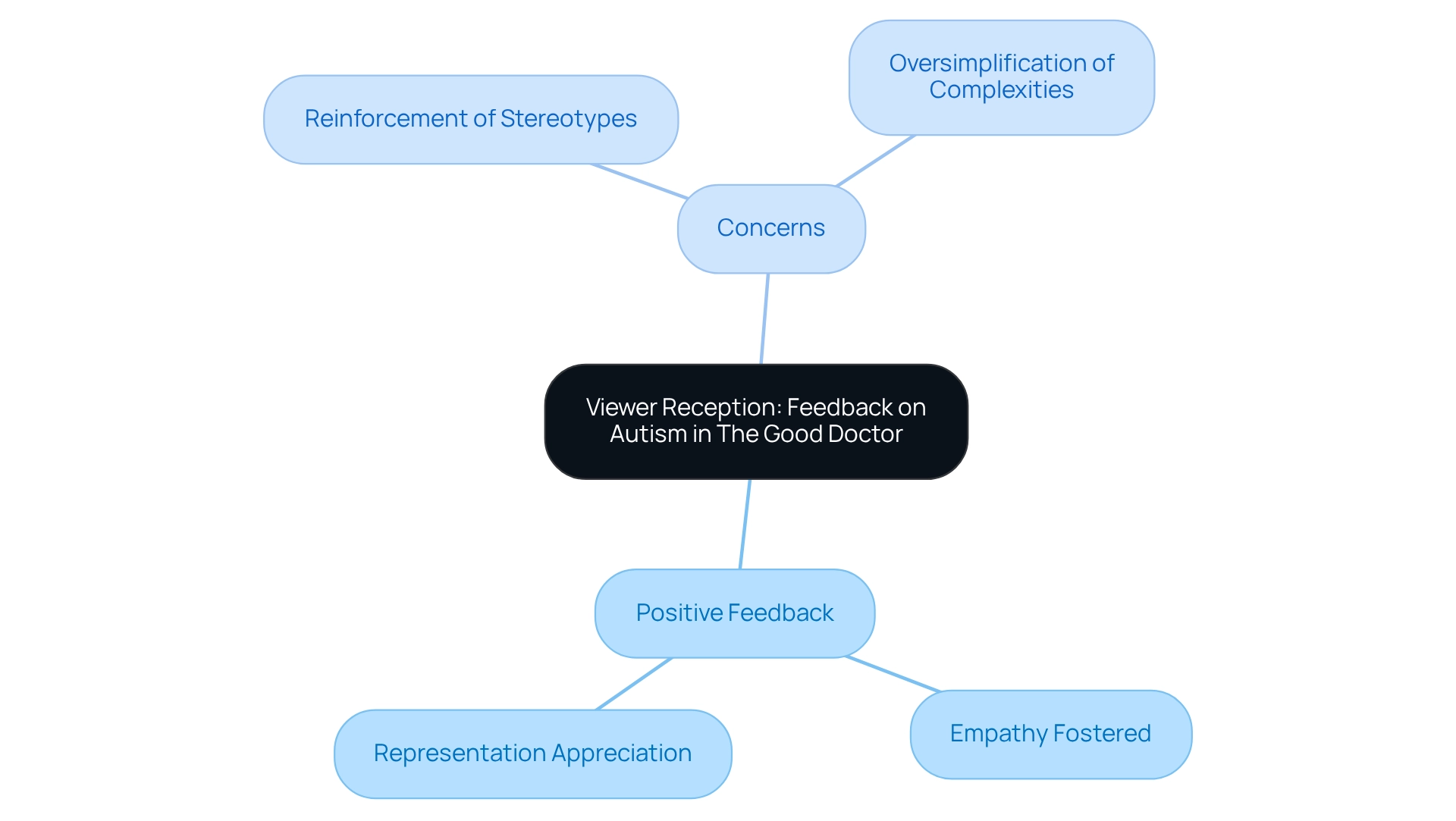
Expert Consultation: Ensuring Authenticity in 'The Good Doctor's' Autism Portrayal
The Good Doctor' has engaged specialists to ensure an authentic representation of Dr. Shaun Murphy's character, which raises the question: does Shaun Murphy have autism in real life, and is this vital for accurately reflecting the experiences of individuals on the spectrum? This partnership is not just a procedure; it is a strategic endeavor to integrate the intricate truths of the condition into popular media.
By consulting experts who possess profound knowledge of the condition, the show enhances its depiction, promoting increased awareness and compassion among viewers. Studies show that media portrayals greatly affect societal views of developmental disorders, and detractors have contended that these depictions can frequently be oversimplified, failing to reflect the complexities of the spectrum. This makes expert involvement crucial in challenging stereotypes and nurturing a more inclusive narrative.
Successful partnerships, like those observed in various media projects, illustrate that professional advice can lead to more precise and considerate representations, ultimately benefiting both viewers and the community affected by developmental disorders. For instance, the case study titled 'The Importance of Representation in Media' highlights how diverse and inclusive portrayals can enhance self-esteem and challenge stereotypes, showcasing the positive impact of expert involvement.
As we approach 2025, the focus on genuineness in character development remains crucial, emphasizing the necessity for ongoing communication between content creators and specialists in neurodiversity. Parents and advocates are encouraged to actively support and advocate for authentic portrayals of the condition in media, contributing to a more informed and empathetic society.
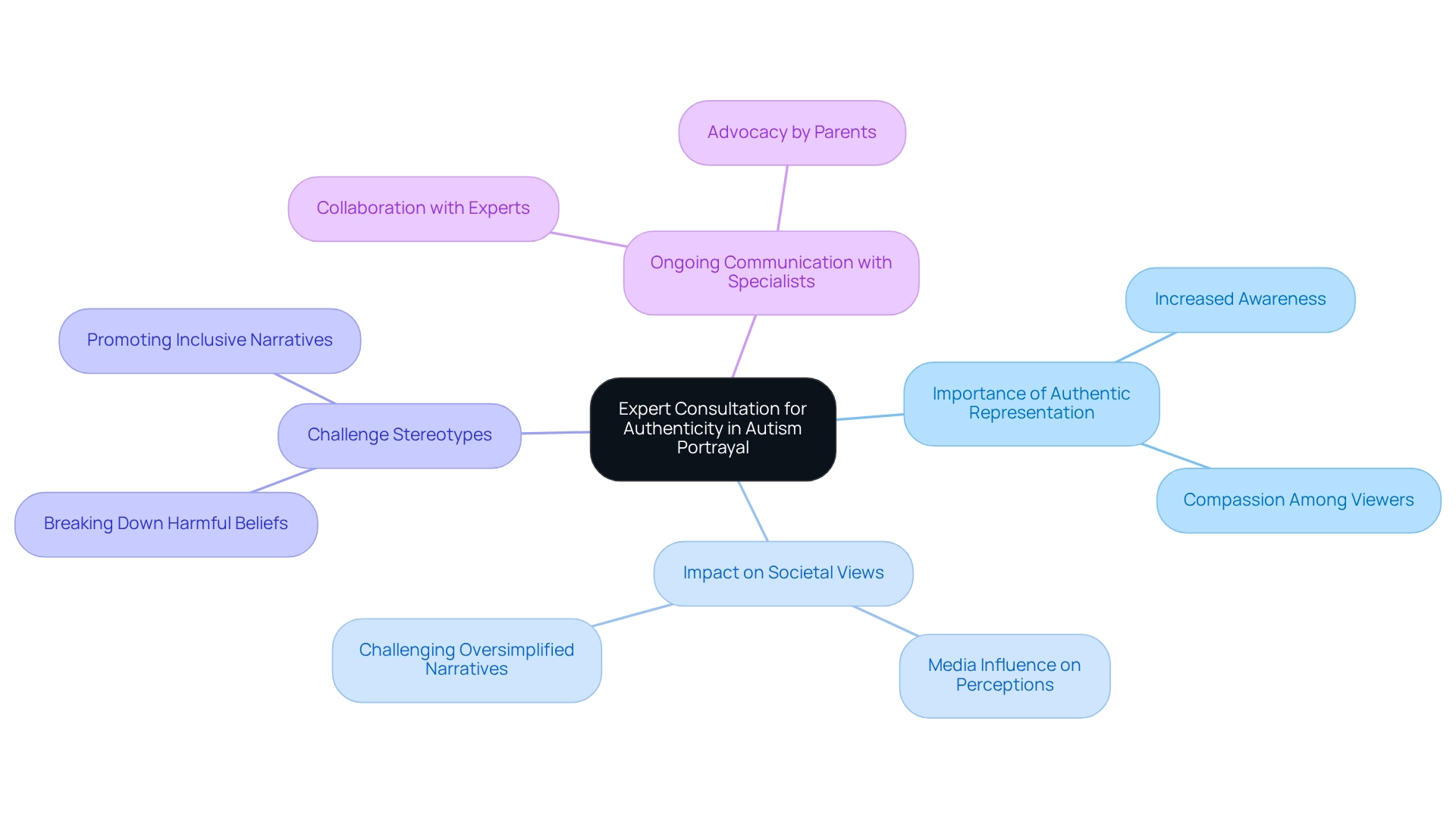
Character Traits: Analyzing Dr. Shaun Murphy's Autism Characteristics
Dr. Shaun Murphy exemplifies many characteristics often associated with autism, which raises the question of whether does Shaun Murphy have autism in real life, including difficulties in social interactions, a strong preference for routine, and a unique way of processing information. His direct communication style and literal thinking may sometimes lead to misunderstandings, yet they also highlight his honesty and integrity. Importantly, his remarkable medical skills showcase the extraordinary strengths that individuals on the spectrum can possess, effectively challenging the stereotype that autism is merely a limitation, which raises the question: does Shaun Murphy have autism in real life? As David Epstein notes, "The guidelines of the game are frequently vague or lacking," which resonates with the complexities of understanding autism and the distinct abilities that individuals like Dr. Murphy bring to the table.
This portrayal not only underscores the diverse talents of those on the spectrum but also prompts the question of whether does Shaun Murphy have autism in real life, encouraging a broader understanding of their potential contributions to society. Much like military veterans transitioning to new careers, individuals on the spectrum often encounter unique challenges that might be seen as drawbacks. However, research shows that these varied experiences can affirm their exceptional strengths. In fact, statistics reveal that approximately 10% of individuals with autism exhibit savant abilities, reinforcing the idea that autism encompasses a wide range of capabilities.
This exploration of Dr. Murphy's character not only reflects the qualities of neurodiversity but also serves to challenge stereotypes in media portrayals, advocating for a more inclusive perspective on the spectrum of neurodiversity. By recognizing and celebrating these strengths, we can foster a more understanding and supportive environment for all individuals.
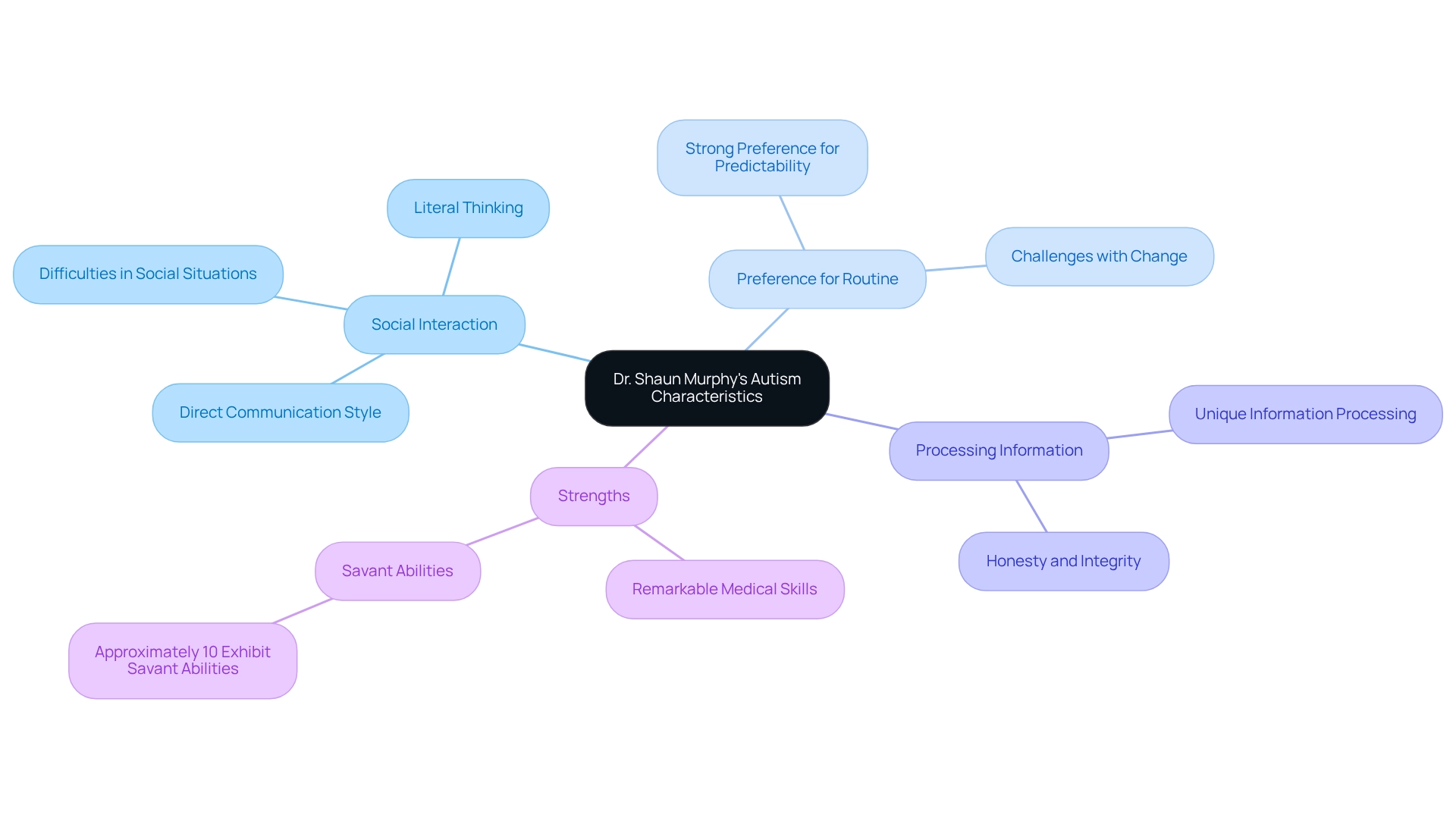
Conclusion: The Role of 'The Good Doctor' in Sparking Conversations About Autism
The Good Doctor' serves as a vital platform for initiating conversations about developmental disorders, effectively challenging stereotypes and fostering understanding. By showcasing a complex character like Dr. Shaun Murphy, the series invites viewers to explore the intricate realities of the condition and poses the question: does Shaun Murphy have autism in real life, highlighting the diverse experiences of individuals on the spectrum. As Courtney Weaver noted, "I believe that this show has evolved Shaun’s character from the pilot to the ‘Parenting’ episode," underscoring the character's growth and its significance in discussions surrounding developmental differences. In 2025, dialogues about developmental disorders have become more nuanced, with various communication forms significantly shaping public perceptions. The positive representation of the condition in 'The Good Doctor' has been embraced enthusiastically, as illustrated by Matthew's joy regarding the show's portrayal, reflecting a broader sentiment among viewers.
The impact of communication channels on discussions about developmental disorders is further exemplified by initiatives like KFM Making a Difference, founded by Kerry Magro in 2011. This organization addresses the educational needs of adults with developmental disorders by providing scholarships for college attendance, thereby enhancing their opportunities and quality of life. This initiative enriches the conversations sparked by 'The Good Doctor' by supporting individuals on the spectrum and demonstrating the tangible benefits of positive media representation. Such case studies underscore the importance of media in fostering meaningful discussions about developmental disorders and uplifting individuals within that community.
Expert insights also reinforce the value of shows like 'The Good Doctor' in advancing conversations surrounding developmental disorders. Kerry Magro, who has a personal connection to the condition, emphasizes the importance of representation in entertainment, particularly in discussions about whether does Shaun Murphy have autism in real life, stating, "I used to have severe nonverbal challenges. Today I’m a full-time professional speaker & best-selling author and autism-film consultant." As the narrative surrounding this condition evolves, the role of media in raising awareness and understanding remains essential, contributing to a more inclusive society. By engaging with these representations, audiences are encouraged to reflect on their perceptions and cultivate a supportive community for individuals with autism.
Conclusion
The Good Doctor stands as a significant cultural touchstone in the portrayal of autism, effectively challenging stereotypes and promoting a deeper understanding of the spectrum. Through the multifaceted character of Dr. Shaun Murphy, the series invites viewers to witness both the challenges and strengths associated with autism, fostering empathy and awareness. This show not only highlights the complexity of autism but also emphasizes the importance of authentic representation in media, which is vital for nurturing a more informed and compassionate society.
As discussions surrounding autism representation continue to evolve, the impact of The Good Doctor is evident in the conversations it sparks among viewers and advocates alike. The series encourages a reconsideration of preconceived notions, promoting a narrative that values the unique experiences of individuals on the spectrum. Initiatives inspired by the show, such as educational programs and advocacy efforts, further illustrate the tangible benefits of positive media representation.
Ultimately, The Good Doctor serves as a powerful platform that not only entertains but also educates and inspires. By engaging with its portrayal of autism, audiences are empowered to reflect on their perceptions and contribute to a more inclusive community for individuals with autism. In doing so, the show plays a crucial role in advancing the dialogue surrounding autism, reinforcing the need for understanding and acceptance in society.
Frequently Asked Questions
What is the mission of ASD Media?
ASD Media is committed to enhancing the implementation of ABA therapy, providing valuable insights and strategies to improve outcomes for parents and professionals, and cultivating a supportive community for sharing experiences.
How can I stay updated with ASD Media's resources?
By subscribing to the ASD Media newsletter, you can receive updates on the latest news and gain unlimited digital access to a wealth of resources tailored specifically for you.
What strategies does ASD Media focus on?
ASD Media focuses on effective strategies for managing challenging behaviors, navigating support services, and enhancing social skills development for children with developmental disorders and ADHD.
Who is Dr. Shaun Murphy and what does his character represent?
Dr. Shaun Murphy, portrayed by Freddie Highmore, is a surgical resident whose character illustrates the complexities of neurodevelopmental differences and savant syndrome, showcasing both challenges and remarkable abilities faced by individuals on the autism spectrum.
Why is the representation of autism in media important?
The representation of autism in media, such as through characters like Shaun Murphy, raises awareness, fosters understanding, and encourages audiences to consider the diverse experiences of individuals on the spectrum.
What discussions have emerged regarding Shaun Murphy's character?
Discussions have intensified around whether Shaun Murphy has autism in real life, especially following events that raised questions about representation and sensitivity in media, such as a misgendering incident in 'The Good Doctor.'
How does 'The Good Doctor' impact public understanding of developmental disorders?
'The Good Doctor' has shaped public understanding by bringing the topic of developmental disorders into mainstream conversation, challenging stereotypes, and nurturing empathy among viewers.
What concerns do experts have regarding the portrayal of autism in media?
Some experts caution that portrayals like Shaun's may depict autism as a 'superpower,' primarily through white, male genius characters, which can oversimplify the experiences of individuals on the spectrum.
How can parents and advocates engage with media portrayals of autism?
Parents and advocates can engage with these portrayals by advocating for more nuanced representations in media, which can help nurture a more inclusive understanding of autism and support advocacy efforts.




